Here are step-by-step instructions for making Japanese Udon Noodles by hands from scratch in 17 Steps (with Pictures). This homemade handmade Udon is absolutely delicious with unique chewing texture – thick, smooth and chewy. The noodles are made by kneading wheat flour, salt, and water. It can be served hot or cold. Usually they are eaten by dipping into Mentsuyu (noodle soup). Bottled Mentsuyu is available at Japanese grocery stores. Spring onion, grated ginger and sesame seeds go great with Udon noodle soup.
Homemade Handmade Japanese Udon Noodles Recipe
Servings:
4 persons
Ingredients:
300g Udonko (udon flour) or wheat flour with protein content 9.0 to 9.5%
15g salt
130ml water, plus additional if necessary
50g corn starch/potato starch
Method:
1. Dissolve the salt in the water completely.
2. Sift wheat flour into a large bowl. Gradually pour in the water and stir well with chopsticks. Repeat this step for a few times until the water is used up and the mixture becomes pieces.
3. Press the crumble flour mixture with your hand and form into a dough. If the dough is too dry and powdery, add some water.
4. Put the dough in a food storage bag and fold the bag in the middle. The dough is not smooth at this stage and it can be easily break apart.
5. Knead the dough with a rolling pin. Use your body weight to press the dough. Gradually shift the rolling pin and spread the dough until the bag is filled.
6. Roll up the dough in the bag and turn it by 90 degrees. Again, fold up the bag in the middle and knead the dough with a rolling pin until the bag is filled. Repeat the kneading process around 5 to 6 times until you get a smooth even texture. If the dough is not smooth enough, give an extra kneading process.
7. Press the dough into 2.5cm thickness and rest the dough in the bag for 10 minutes. The dough becomes softer in the resting process and you can easily shape the dough.
8. Face down the dough on its smooth surface. Press it with your palm to even thickness. Fold the edges of the dough toward the center in order to shape it into a ball. Be careful not to leave the air in the dough. Replace the dough in the bag and rest it at room temperature for 1 hour.
9. Spread the starch on a pastry board and also dust on top of the dough. Press the dough ball with the rolling pin. Flatten the half of the dough away from you and flatten the other half towards you. Rotate the dough by 90 degrees and repeat the process.
10. Roll out the half of the dough from you and roll out the other half towards you. Rotate the dough sheet by 90 degrees and repeat the rolling process.
11. Roll up the dough around the rolling pin and roll it down on the pastry board. Rotate the dough sheet by 90 degrees and repeat the process.
12. Spread the dough evenly in a square and make sure it has less than 3mm thickness. Apply the starch on the dough and roll it around the rolling pin.
13. Dust the starch on the cutting board and spread the dough on the surface. Put generous amount of starch on the dough. Fold it and put on the starch again. Repeat the process. Be careful not to overlap the creases. Dust the starch on top of the folded dough.
14. Position the knife vertically to the creases and cut the dough into noodles. Shake off the starch and line up the Udon noodles on a tray. If the noodles stick together, gently tear the noodles off one by one. The noodles will be double in size after cooking due to water absorption.
15. Boil a pot of water. Lightly shake of the starch and submerge adequate amount of the Udon noodles in the boiling water. Gently stir with the chopsticks so that the noodles do not stick to the bottom of the pot. Cook for 13 to 15 minutes.
16. Pick a noodle with the chopsticks. Immerse it in cold water and see if it has the texture you like. Strain and rinse the Udon noodles with running water to prevent the Udon noodles from getting gooey and improve the texture.
17. Drain the noodles well and serve them on a dish. Enjoy the noodles as soon as possible otherwise it will become soggy. Make sure you make slurping sound when eating these Udon noodles.

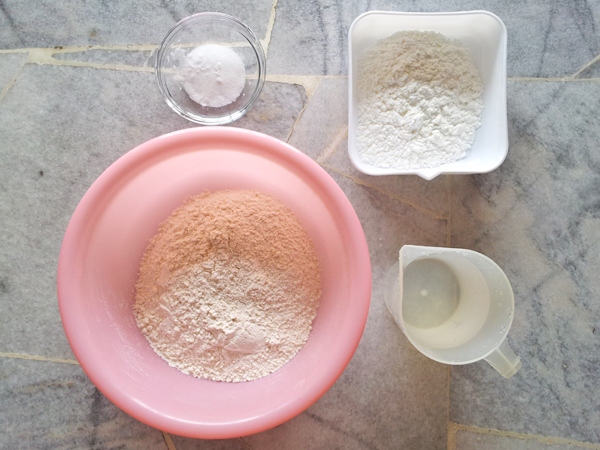






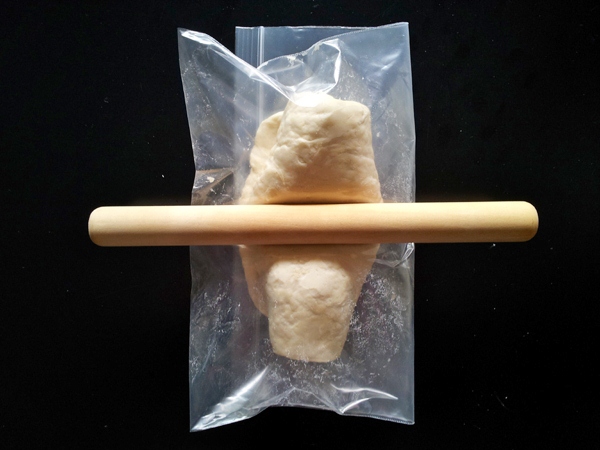

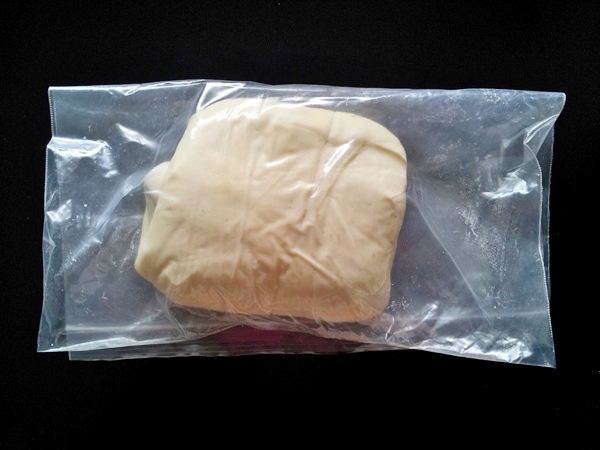
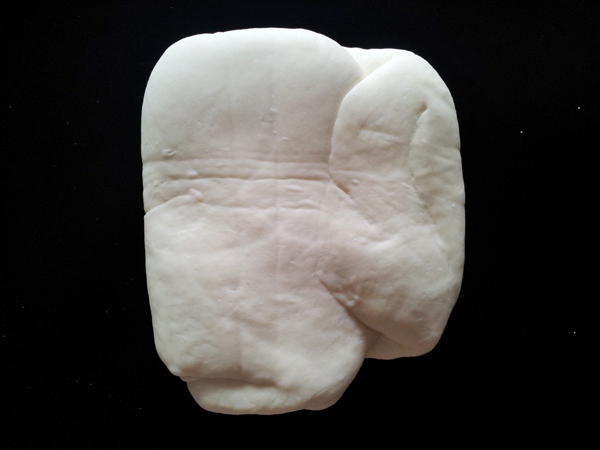


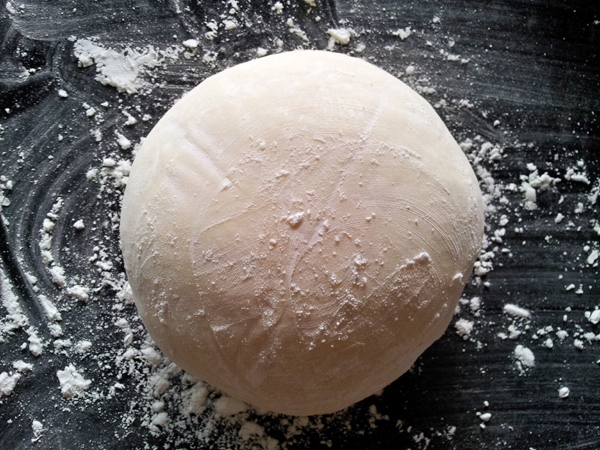
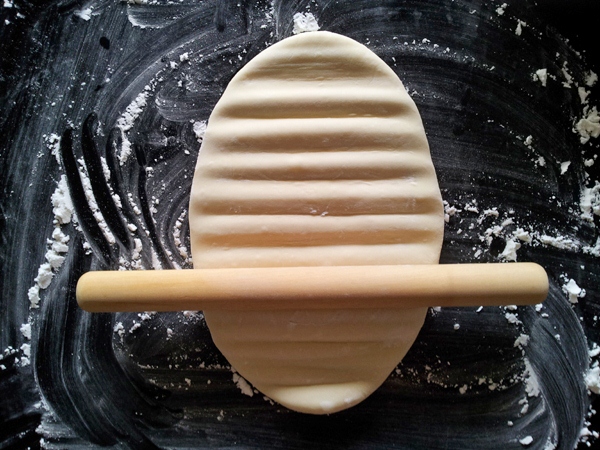
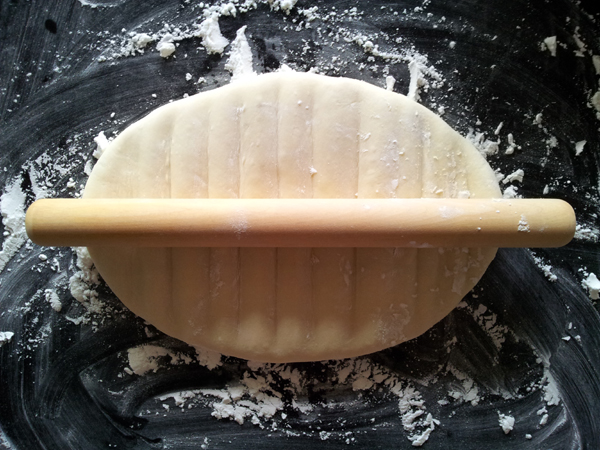





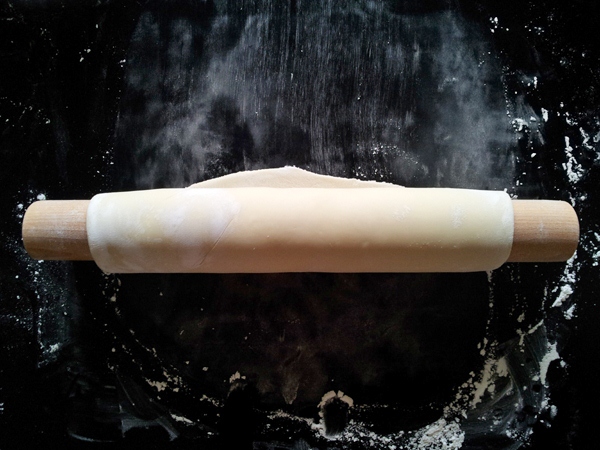

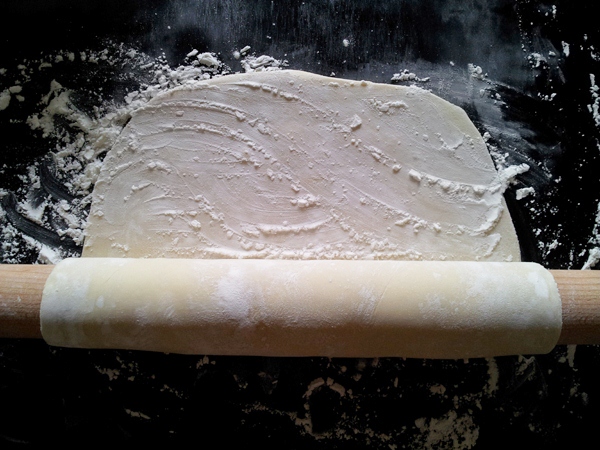
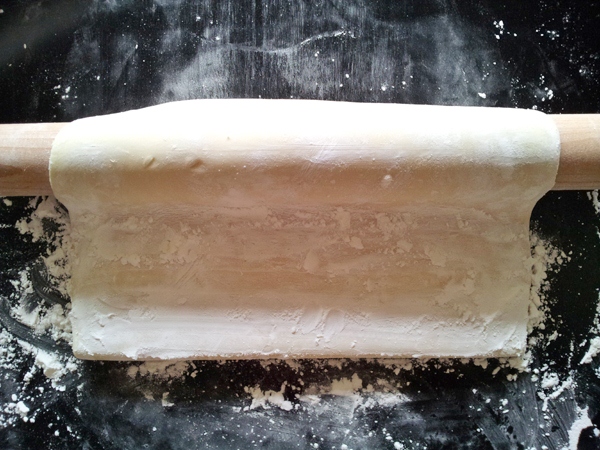
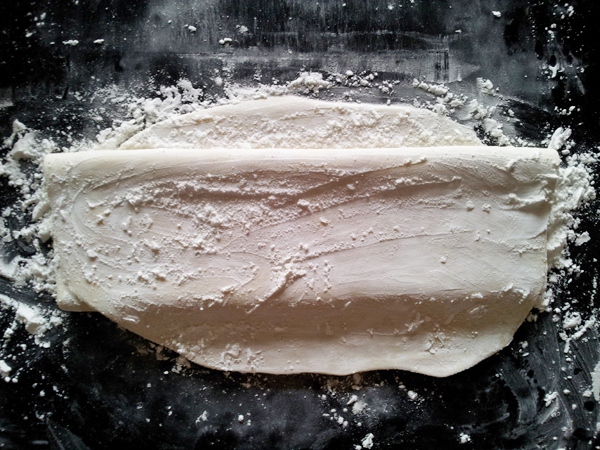

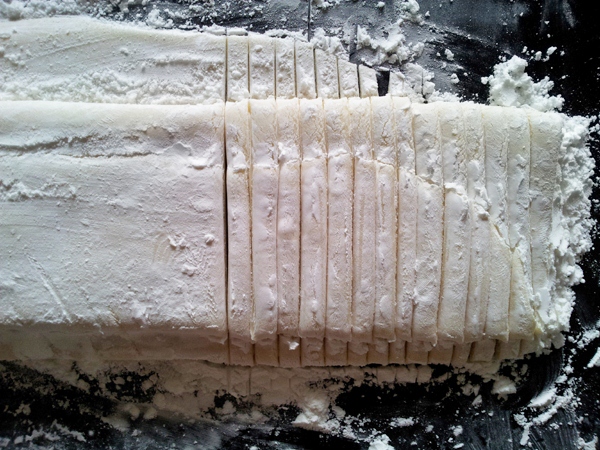
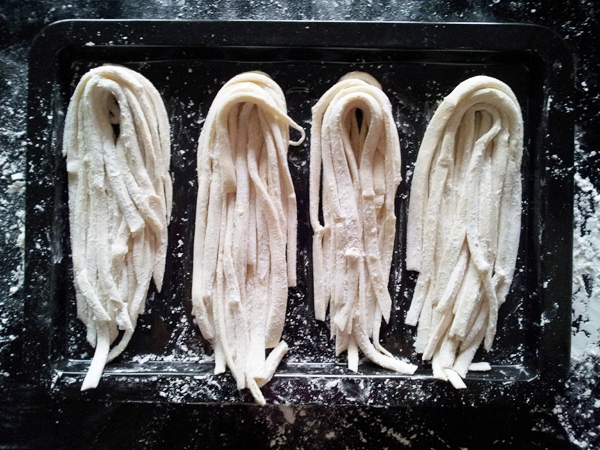


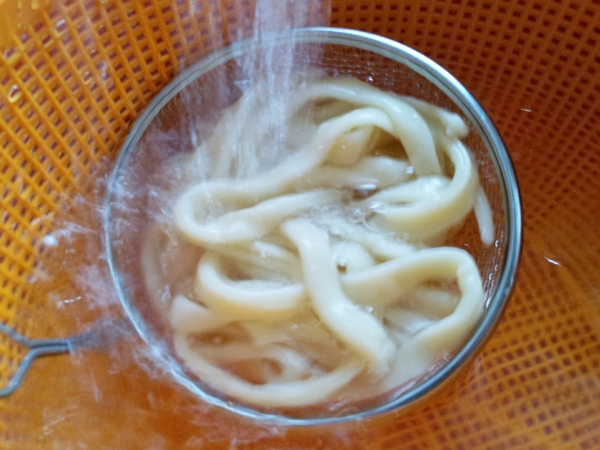
Note:
- The key ingredient in making Japanese Udon noodles is the flour. If you can, get Udonko (Udon flour), which is specially made for Udon noodles. Otherwise, use wheat flour with protein content 9.0 to 9.5%. The protein content of flour varies depending on the type and brand. How to calculate the protein content of wheat flour?
The following flours are categorized based on their protein content:
| Cake and pastry flour | 7 – 9 % protein |
| All-purpose flour | 10 – 12% protein |
| Bread flour | 12 – 16% protein |
| Whole-wheat flour | 16% protein |
To determine the exact protein content of flour, look at the nutritional information on the package. For example, if the nutritional information displays 12 grams of protein per 100 grams of flour, the protein content is 12%. However, if the nutritional information is displayed in something other than “per 100” grams, you need to do some math. If there is 4 grams of protein per 30 grams of flour, you need to multiply 4 by the number 100 and then divide by 30 (see example below).
4g protein per 30 g flour
4 × 100 = 400/30 = 13.33
This flour has a protein content of 13.33%.
Use this formula to determine the percentage of protein in flour:(x) grams of protein per (y) grams of flour
(x) x 100 = (z)
(z)/(y) = % of protein content in the flour
- Do not add too much water or the dough will be sticky. Stop it as soon as a dough forms. I used 170ml of water in making this.
- The dough softness and resting time depends on the room temperature, humidity and the type of wheat flour. To get the rough idea for the time, rest the dough in a plastic bag for 30 to 60 minutes in Summer, 2 hours in Spring and Fall, 3 to 4 hours in Winter.
- Use generous amount of water to cook the noodles, otherwise the water will get starchy. The cooking time depends on how thick your noodles are.
- Choose a large food storage bag. I used 28cmx27cm zipper freezer bag, available at Daiso.
- Use a bigger rolling pin for easy rolling. I used two rolling pins of different sizes.
- If you think the Udon Noodles are too much for you, put them in the freezer for a few hours to freeze. When they are frozen, put them in an airtight food storage bag and store in the freezer (can keep for up to a month). There is no need to defrost the frozen noodles when you want to cook them.
 Contact
Contact